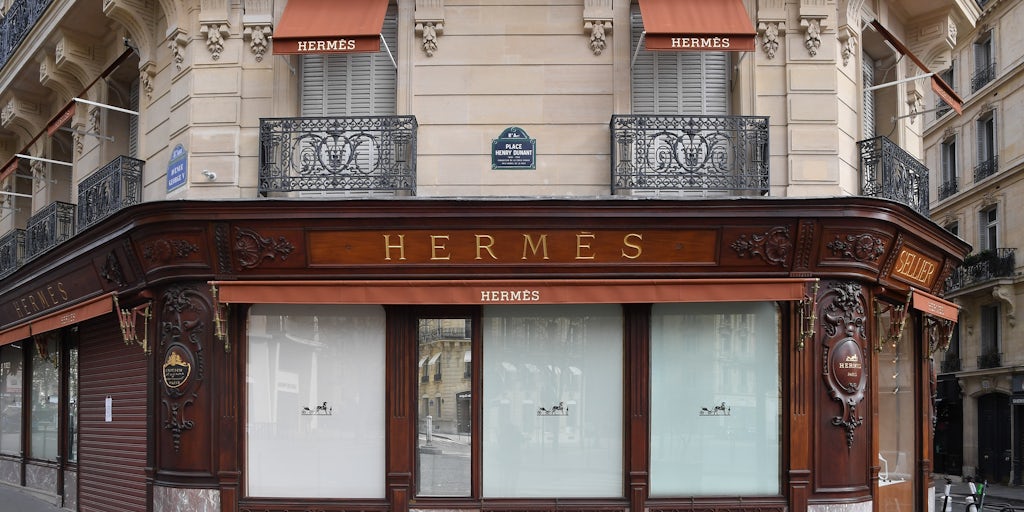Why the World’s Biggest Beauty Company Is Moving Upmarket
L’Oréal’s annual results conference is a reliable source of intel for the beauty space: the company issues closely-watched projections for industry-wide growth, as well as surfacing macro- and micro-trends impacting its businesses ranging from Garnier shampoo to Armani Privé perfume.
This year, the beauty industry’s largest player presented a broad spectrum of initiatives, from partnerships with TikTok-famous doctors, who are adding fuel to the growth of its brands like CeraVe and SkinCeuticals; to the rapid growth of India’s middle class and the recent embrace of perfume by young Chinese consumers (the category has long been underpenetrated in the country).
Full-year revenue rose 11 percent on an organic basis to €38 billion, or $41 billion. L’Oréal said. Profits rose 21 percent year-on-year to €7.46 billion. Executives painted a picture of cautious optimism for 2023 as the world’s consumers attempt to move on from a period of “polycrises” which include the Covid-19 pandemic, inflation and the war in Ukraine.
“At a macro level, we see some patches of blue sky amongst the dark clouds. There are a few early signs of reduced inflation on some raw materials, recession is seen as less likely in many parts of the world and China is reopening with a clear focus on economic growth,” CEO Nicolas Hieronimus said.
While L’Oréal tackles many topics head-on, broader shifts in the group’s strategy aren’t always spelled out. That’s likely because the company is prized by investors for its stable trajectory. But one theme that emerged in nearly all of its brands is a concerted push toward more expensive products. Across key divisions, the group appears to be accelerating its long-term pursuit of what it refers to as “premiumisation” in the global beauty market.
Elevated Skincare
More than three decades after acquiring Helena Rubinstein in 1988, L’Oréal has recently leaned into the brand.
In 2023, Rubinstein crossed the threshold of €1 billion in annual sales for the first time, and the group plans to keep growing sales with luxe propositions like its $500-plus “Re Plasty” creams. Helena Rubinstein is now one of the top-five brands within L’Oréal’s luxury division.
To be sure, L’Oréal has been pushing toward the high-end for years — recently acquiring licences for luxury names such as Valentino and Prada to grow alongside existing lines like Armani, Kiehl’s and YSL, which have also become billion-plus businesses. But Rubinstein’s prices are a big step up from a $45 Armani foundation or $95 dollar Prada Paradoxe perfume.
L’Oréal explained that the ultra-prestige segment — with creams starting at $200 — is taking a bigger share of the overall beauty market. Newer lines, too, like Augustinus Bader have tried to chip away at brands like Estée Lauder-owned La Mer and Beiersdorf’s La Prairie. In China, the segment now accounts for over 25 percent of the luxury skincare market, L’Oréal Luxe president Cyril Chapuy said.
With top-end concepts growing fast, L’Oréal just relaunched another one of its most expensive brands, Carita, unveiling a renovated spa steps from the Elysée Palace in Paris’ Rue du Faubourg Saint-Honoré in late 2022. The brand sells eye creams and body oils for approximately $350 and $100, respectively.
Mass-Market Premiumisation
At the other end of the group’s price spectrum are mass-market units like L’Oréal Paris, Garnier and Maybelline, which remain far less expensive. But those brands, too, are focused on bolstering their premium positioning within entry-level beauty.
“Our focus is on the upper half of the middle class,” Consumer Products president Alexis Perakis-Valat said. “This group represents two billion people worldwide and thanks to search, makeup tutorials and TikTok influencers, they are becoming more beauty savvy.”
The division aims to encourage customers in countries with a fast-growing middle class — L’Oréal highlighted India — to trade up to premium-yet-accessible options. “Skin care, premium hair care, makeup and hair colour are markets in which people seek innovation and desirability, not just utility,” Perakis-Valat said.
Competing less on price, and focusing more on consumers with a bit more padding in their household budgets makes sense in an economy marked by inflation since the coronavirus pandemic. The consumer division saw operating costs increase substantially as a share of revenue last year, the group said. Preserving and enhancing pricing through branding and innovation could be the key to getting back on track.
The Expert Boom
In the group’s active cosmetics division — which was just rechristened “Dermatological Beauty” in place of its previous moniker “Active Cosmetics” — the price picture was more mixed.
On the one hand, the division acquired high-end spa brand Skinbetter Science in late 2022 and cited strong sales in its SkinCeuticals unit, whose $182 “C E Ferulic” serum has become a cult favourite.
On the other hand, rapid growth of 22 percent year-on-year (twice as fast as any other division) was driven largely by more-accessible CeraVe, whose $20 moisturisers have taken retailers by storm.
Still, the rapid growth for entry-level dermocosmetics like CeraVe could be seen as a move upmarket in the context of U.S. drugstores, where expert-backed skincare is stealing market share from more squarely mass-market propositions. Alongside CeraVe, the division is now rolling out its $30 LaRoche-Posay creams to more retailers in the U.S.
“We are able to premiumise the mass market [channels] in the U.S. … At the same time in countries that are developed … we can keep growing through affordability,” Myriam Cohen-Welgryn, L’Oréal’s president for dermatological beauty, said.


